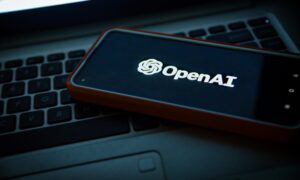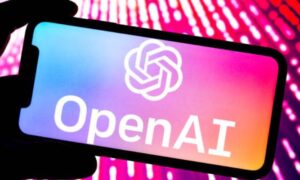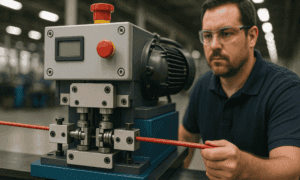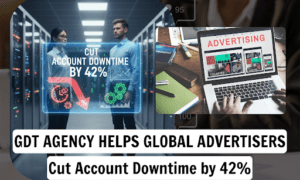Introduction: Why the OpenAI x IO Acquisition is Big News?
Big news in the world of tech industries is the OpenAI IO acquisition, the company behind ChatGPT. The acquisition of companies is a common practice in the world of business, which sets the stage for new trajectories or markets. What can we expect from this acquisition? OpenAI in the field of artificial intelligence, by acquiring IO, a start-up company founded by Jony Ive co-founded by Scott Cannon, Evans Hankey and Tang Tan, interestingly, they are all former colleagues from Apple, is making a bold move, signaling to its competitor their desire to step into the AI-powered device industry. As the next biggest shift in the atmosphere of devices is the AI-supported devices that are already being distributed globally, the ESIMUSA.com in the timeless era of AI-driven devices. In 2024, OpenAI acquired 23% of IO in a partnership deal. The deal is valued at $6.5 billion, making it the largest acquisition to date by OpenAI, and it is structured as an all-stock deal. To be noted is that Ive won’t be joining OpenAI staff as a part of their deal; rather, he will continue to operate independently at his design firm, LoveFrom. As a part of their deal, LoveFrom will take over all designs of OpenAI software, and around 55 hardware engineers, software developers, and manufacturing experts will join OpenAI from IO.
Meet the Team Behind IO: Jony Ive and Former Apple Designers
In the year 1992, Ive joined Apple and was the head of design. Iconic products like the iPod in 2001, the iPhone in 2007, the iPad in 2010 and the Apple Watch were designed with the help of Ive. In 2019, Ive exited Apple to start his start-up under the name LoveFrom. He was recognized as one of the men behind the revival in the 1990s. IO was established in 2024 to develop a new family of AI-powered devices, fostering cutting-edge technologies with top design. The company consists of engineers who have phenomenal knowledge in hardware and software designs and experience in product development. Many of these engineers have worked together for decades. OpenAI’s vision is to develop new generations of AI devices that move beyond traditional screens and interfaces. Regarding the products that have been developed by IO, not much information is available yet some of the interviews suggest that they are moving towards AI-native device prototypes, which means they are working on a prototype device that can directly integrate advanced capabilities into the hardware; they even call it “ magic intelligence in the cloud.” Vision Beyond Screens is based on the idea that IO’s products serve as an intuitive extension of the human mind, making interactions with AI effortless. Apart from these developments, they are also working on consumer-oriented hardware. In summary, IO’s products are not completely known, but it is best understood that they are pioneering in the development of next-generation AI-powered devices that are beyond what traditional computers and smartphones could offer.
Why Did OpenAI Acquire IO? Strategic Goals and Hardware Ambitions
Experts believe that AI software is the core strength for OpenAI, and the company recognizes the need for fully leveraged physical products with fully integrated AI features. OpenAI hardware would have been the core reason for this acquisition. With OpenAI, Jony Ive will be able to make this acquisition a great success in terms of technological innovations. This acquisition suggests that deeply integrated AI-powered devices are the biggest ambition for OpenAI IO. Imagine the integration of AI chatbot-like technologies deeply integrated into devices like Apple, suggesting that science fictions are no longer fictions. With the rise of AI, any of these technologies can be readily available at any time. OpenAI hardware could be one of these technologically advanced products that could be available in the market. Altman even said in one of his interviews that they have developed a prototype of a device, calling it “the coolest piece of technology the world has ever seen,” suggesting they have more to offer than what we could imagine. OpenAI’s acquisition aligns with its broader mission to advance digital intelligence in a way to creates impact on humanity. OpenAI and Jony Ive will pour their knowledge into developing AI hardware with a human-centered approach. Sam Altman and Jony Ive hinted at the development of “AI companions,” which are said to be screenless devices, fully aware of devices that could redefine how users interact with technologies. “ AI companions” will be the first collaborative product by OpenAI-Jony Ive, which are expected to be launched in 2026.
Industry Response: A Game-Changing Move or Risky Gamble?
The tech industry views this acquisition as a game-changer, potentially reshaping everything in the tech industry we knew of. This deal can reshape how consumers and businesses interact with AI. The merging of OpenAI’s software with IO’s hardware expertise sets new standards for AI devices. With the AIs in the market, tech companies are already competing with each other. The competition has become so fierce with many such mergers and acquisitions. Other tech giants are also racing to develop their own physical AI devices that can perceive, analyze, and interact with the real world in real time.
AI Companions and the Future of Interaction: What’s Next?
Integration is the key to any M&A. So far, OpenAI has agreed to give access to their software to IO, and on the other hand, IO has sent around 55 hardware engineers, software developers, and manufacturing specialists to join OpenAI teams in San Francisco. Altman told an OpenAI employee his plan with Ive of AI “companions,” according to The Wall Street Journal. AI companion, as the name suggests, the device would be aware of its user’s surroundings and life, and it could be placed in a pocket or on a desk and be featured alongside products like MacBook Pro or iPhone. Ive previously, in an interview, hinted at his desire to develop a device without a screen; when a reporter questioned him on that, he replied that the new device they are planning to develop with OpenAI will not replace traditional devices. Altman told Bloomberg their new device would allow users to connect with AI in ways they could have never imagined, and he also suggested that their product wouldn’t make smartphones go away and could be a new kind of thing in the market. The pair also hinted that with OpenAI hardware, Altman expressed his desire to develop their new computers, writing on X that he was “excited to try and create a new generation of AI-powered computers.”
Expert Takes: Can OpenAI and Ive Reshape the Hardware Landscape?
Experts believe OpenAI hardware will be the next big thing. This deal is not just like any acquisition, it purely focuses on using each other’s strengths to create something huge. Altman once expressed that if he had to ask ChatGPT anything, he would have to sit and take his laptop, which clearly says it all. He desires to use AI without feeling clunky. Jony Ive, on the other hand, has made Apple products feel like magic. He is one main reasons why Apple products look so beautiful, simple, and something one desires. Imagine if these two people with their best expertise come together for the common ambition of OpenAI hardware, they could make AI feel natural and effortless in our hands. That would change a lot like how the first smartphones entered the market.
According to Forbes, Daniel Newman, a leading AI industry analyst, author of bestselling technology, and CEO of The Futurun Group, says that this merger is bold and risky. He believes this would indeed open doors for creating new devices and profiles that are purely built by the AI world. This combination of OpenAI and Jony Ive might bring a serious threat to Apple. Disrupting the hardware ecosystem and the software of IOS and Android will not be easy because of their large install base.
Ahmed Banafa, Ph. D., a technology expert and engineering professor at San Jose State University, says the OpenAI-Jony Ive union is than about putting AI in a handheld box. He believes this vertical integration strategy could completely restructure the AI landscape. He says OpenAI is no longer content to simply provide the brain; they want to design the body, the soul, and the entire nervous system of future AI iterations. He believes that by controlling both the software and the hardware, they can optimize performance to create a seamless experience and unlock new levels of intelligence that have never been known.
Beyond the Deal: OpenAI & Ive’s Shared Dream
Like any other acquisition, OpenAI & Jony Ive’s journey started as a collaboration built upon friendship, curiosity, and shared value, has bloomed into greater ambition in into this mega dream of OpenAI hardware. Their blog post says that May 21, 2025, is an extraordinary moment in the history of OpenAI. The acquisition happened not based on any predictable future, but purely based on passion for the same vision, where their tentative ideas and explorations evolved into tangible designs. They solely believe that their collective ambition is to build a family of products that is common to their ambition. This acquisition is onboarding the best hardware and software engineers, along with the best technologies, physicists, scientists, researchers, and experts, making OpenAI’s hardware dreams so possible. Scholars believe M&A is like a romantic affair, where companies try to merge for grander ambitions. Seemingly OpenAI Jony Ive collaboration story serves a similar purpose. Only the future will let us know about the success of this merger.



































